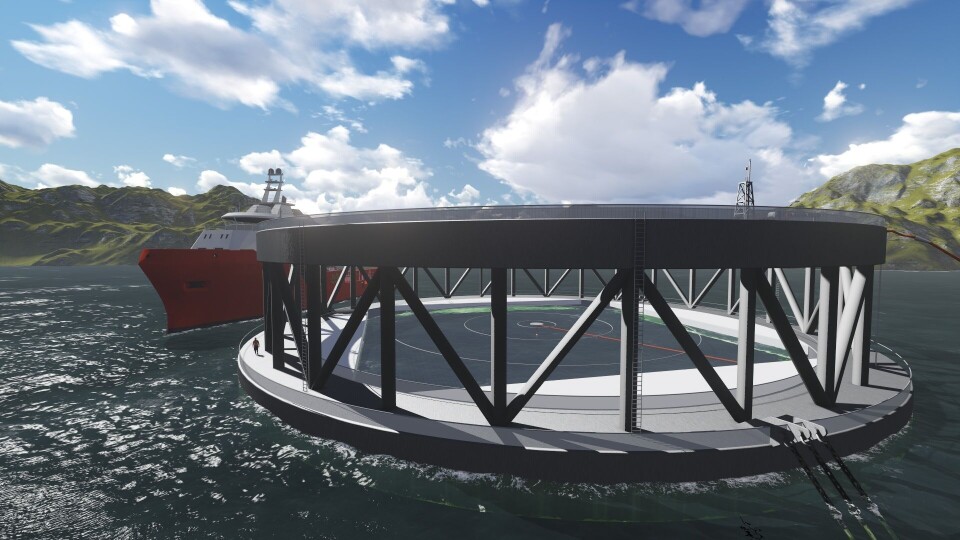
Mega-cage plan is given the go-ahead
Two semi-submersible cages each designed to hold 3,000 tonnes of salmon are to be built by Arctic Offshore Farming, a collaboration involving Norway Royal Salmon (NRS).
The company had applied to the Norwegian Directorate of Fisheries for 15 development licences, enough to build and stock four of the cages for testing in the open sea, but was given 7.68 development licences (5,990 tonnes maximum biomass), enough for two cages.
In a new, revised concept it is proposed to use a site at the mouth of a fjord, still significantly more exposed than current locations.
The company said other environmental conditions on such sites are very attractive for salmon, with good water exchange that will ensure good fish welfare, growth and environmental sustainability.
Because the project has been scaled down to about half of the original size and the capital requirements have been significantly reduced, one of the collaborators, Aker, has chosen not to move further into the pilot and realisation phase. Aker Solutions will continue as a technology and collaboration partner in the project.
Submerged during operation
NRS is working towards a goal of putting the first fish in the sea during the summer of 2020.
The concept is designed for significant wave heights between 5-15m. The cages have two rings or pontoons, an upper pontoon with a 2m x 3m profile, and a lower pontoon with a 6m x 4m profile. Each has a diameter of 79m. They are joined together by columns 1.5m in diameter.
The cage is submerged during operation so the top ring is on the surface and the top of the net is 10m down, limiting exposure of fish to sea lice and limiting environmental loads on both fish and equipment.
Air pockets integrated in the structure provide salmon with the means to adjust their swim bladder while being submerged for long periods.























































